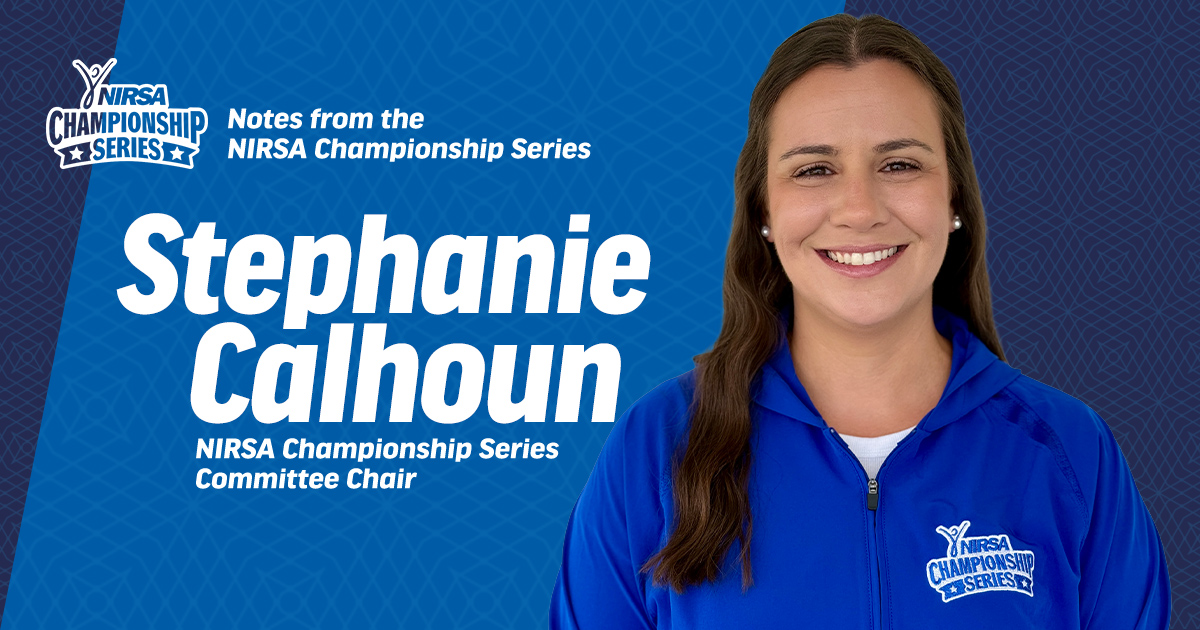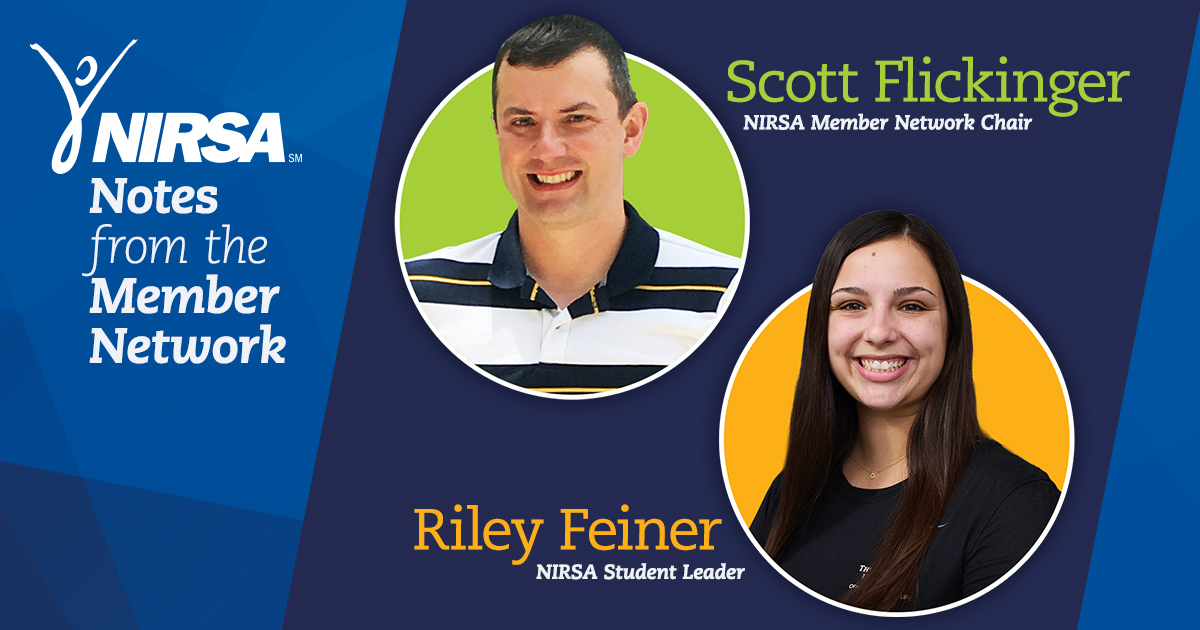By Stan Shingles, 2015-2016 NIRSA President, Assistant Vice President at Central Michigan University
As the cold of winter begins to fade and the sunshine of spring begins to emerge, it is an exciting time of year for new leadership opportunities in our association. With Association elections recently completed, I want to congratulate our newly-elected leaders of NIRSA.
Most recently, the Association completed the 2016–17 cycle for electing and selecting NIRSA leaders for the Board of Directors, Member Network, Foundation Board, and Service Corporation Board (learn more about the volunteer leadership structure of NIRSA). Many other members have been elected or appointed to new leadership positions across the many committee positions as well as to other leadership experiences that support the NIRSA Championship Series, regional and state conference planning, Lead On workshops, and other NIRSA opportunities. This time of year is always exciting as we continue in advancing the leadership and great work of the Association.
Effective leadership is the lifeblood of any good organization, and NIRSA continues to have outstanding volunteer leadership engagement by our members and partners. How to best attract and develop effective leaders has, of course, always been a crucial challenge that many organizations struggle to answer. Adam Canwell and his co-authors in their online article “Leaders at all levels: Close the gap between hype and readiness” outline many of the leadership challenges facing organizations today, suggesting that:
21st-century leadership is different. Companies face new leadership challenges, including developing Millennials and multiple generations of leaders, meeting the demand for leaders with many different competencies including; global fluency and flexibility, building the ability to innovate and inspire others to perform, and acquiring new levels of understanding of rapidly changing technologies and new disciplines and fields.
The authors—using data from a survey conducted by corporate accounting firm Deloitte—identified that a key part of the solution for organizations to overcome these challenges is for them to develop leadership pipelines at every level. At present, “organizations are not only not developing enough leaders,” the authors say, “they are also not equipping those they are creating with the critical capabilities and skills they need to succeed.” So, how do we as an Association go about changing this perception?
NIRSA as an organization continues to strive to develop leaders—both within and outside its volunteer leadership ranks—using myriad strategies to engage members at all stages of their careers. The effective engagement of members early in their careers, as early as their student days, has fostered a culture in the Association that empowers members to connect to leadership experiences in a variety of ways.
Pam Su, Director of Campus Recreation at San Francisco State University and the current Annual Director on the NIRSA Board of Directors, recently presented the session “Demystifying the NIRSA Board Experience” at the 2016 NorCal NIRSA Drive-In Workshop. Her “presentation focused on learning about the rewards and challenges
As our association and members continue the leadership journey, we must do so with new and effective strategies and initiatives. Currently, NIRSA has two task forces designated with addressing specific and important issues affecting leadership development.
Chaired by Greg Jordan, Director of Campus Recreation at Oakland University and NIRSA Past President, the Leadership Development Task Force is currently evaluating opportunities for intentional leadership development within NIRSA. Given NIRSA’s sophistication, breadth, and importance to the field of collegiate recreation, leadership development cannot be left to evolve organically. The focus for this task force will be on how to best support the development of leaders who have the skillset to serve on one of NIRSA’s three boards.
Evaluating the opportunities for intentional NIRSA leadership development will include at a minimum:
- A review of competencies necessary to serve on a NIRSA Board of Directors (includes revised NIRSA Board position description developed by the NIRSA Board Competencies Task Force)
- Analysis of what is learned as professional in collegiate recreation (competencies) that applies to governance of a membership organization
- Analysis of Association governance competencies that are distinct from collegiate recreation competencies and therefore require opportunities for training and development
- Analyses of current NIRSA volunteer opportunities that are part of the pathway to developing the competencies necessary for Board service
- Examining alternative options for communicating the NIRSA leadership development pathways that lead to service on a NIRSA Board
- Evaluating the value proposition for service to NIRSA; articulating what the individual gains and what the Association gains, with special attention given to generational differences
- Identify the points in collegiate recreation professionals’ development path where individuals have to look outside of NIRSA for career development. How might NIRSA leadership development opportunities develop skills that are transferrable to other career or volunteer opportunities?
- Determine new options and strategies to identify and nurture future NIRSA leaders
- Identify and articulate links in NIRSA leadership development and the Professional Registry (e.g. core competencies, continuing education units, professional involvement credits)
- Consider potential methods for demonstrating content mastery
- Develop a framework to assess the success of NIRSA’s leadership development strategy
These are bold and ambitious charges, but so is our leadership vision for NIRSA. The ongoing success of this association lies in the hands of future leaders, and the current Board of Directors is committed to developing those future leaders by focusing a lens on creating the next leadership development initiatives and strategies within the Association and the profession.
The Executive Education Task Force, chaired by NIRSA Past President and Director of Campus Recreation at DePaul University/CENTERS LLC Maureen McGonagle, is working to create relevant educational content that effectively develops NIRSA members. Through survey results and other feedback collected from NIRSA members, the task force has identified a gap in the Associations’ educational offerings at the executive level. This gap is inconsistent with NIRSA’s overall strategic goal of being “the primary resource for leadership and professional development in collegiate recreation, offering invaluable materials, events, and networking opportunities for individuals in all stages of their careers.”
The demographic of members who don’t have sufficient opportunities through NIRSA to extend their professional development through NIRSA has been identified as those aspiring to be directors in the next 3-5 years, as well as new directors who are in the first one to two years of their positions. The task force was constituted to help guide NIRSA’s development of this professional development content area. In the coming months, the group plans to:
- Perform a market analysis using NIRSA’s data about this key demographic; obtain additional data if necessary
- Conduct a needs assessment of the executive-level demographic
- Based on needs assessment, develop content areas for executive leadership training with links to NIRSA’s core competencies
- Identify alternative options for content delivery and ongoing development beyond a potential in-person, multi-day training (e.g., peer-to-peer networking, ancillary resources, etc.)
- Develop criteria to evaluate the success of future program offerings
These are just two examples of NIRSA’s ongoing commitment to leadership development initiatives. They underscore the importance of volunteer leadership in the Association. As these task forces continue their work for the Association, we are optimistic about the future of leadership in NIRSA.
I hope you are inspired to find your purpose as a volunteer leader in the Association, as we continue to pursue the success of the profession for years to come. In her May 2014 President’s Notes entry “The Power of Us,” Director of University Recreation at Louisiana State University and Past President, Laurie Braden reminds us: “NIRSA is becoming all that we imagined, and the power of us together is greater than you or me alone.”
Unless someone like you cares a whole awful lot, nothing is going to get better. It’s not.
And will you succeed? Yes you will indeed! (98 and 3/4 percent guaranteed.)-Dr. Seuss
Be Well.





